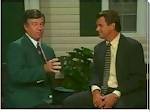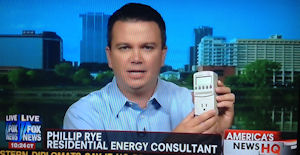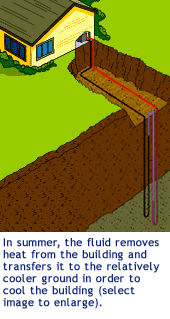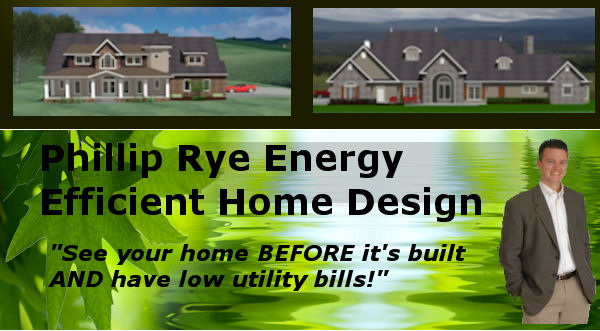
|
|
|
|
 |
||
|
| 1. Introduction |
| 2. Feature Article "A few simple facts about gas and electric heating systems" |
| 4. Bonus Article "How to Fully Utilize the Storage Space in Your Garage" |
| 5. Energy Saving Tips |
| 6. Tell us what you think |
Dear Friend,
The Home Energy Saver is a newsletter dedicated to showing you how to have the most comfortable home for you and your family and still have low utility bills.
Since the release of my first VHS, literally thousands of have grabbed their copies and based on the responses, have really enjoyed the content and saved hundreds of dollars on their utility bills. My home energy saving VHS/DVD is jam packed with information that is guaranteed to lower your utility bills.
Why sacrifice comfort for lower utility bills? Isn't it time that you took control of your utility bills?
|
Using my proven techniques, discover how to save energy and money while doing your part to help save the environment. No matter what kind of home you have, or plan to have, this information applies to you. Gain the knowledge of knowing why your utility bills are so high and find out precisely what you can do to lower them. If you want to greatly reduce 75% of your utility bill, visit http://www.dougrye.com. |
 |
View
video clip (high speed connection recommended) Doug Rye with Co-host Ron Sherman |
==================================================================
|
You'll Learn These Key Points and Their Benefits:
|
Claim Your Copy of Doug Rye's Home Energy Saving DVD Today!
"The Home Energy Saver" newsletter is brought to you by Phillip Rye and nationally recognized energy consultant Doug Rye.
Phillip Rye is a licensed Civil Engineer and has been researching energy efficiency in the United States for the past 10 years.
Doug Rye is a licensed architect and is considered to be the
"Energy Expert" all across the United States. Doug is also the host of the popular "Home Remedies" talk show that
has been on the air for 15 years in 14 states. You can listen live on the internet at, http://www.1037thebuzz.com on Saturday 9-10 a.m. Central Time.
|
===================== FEATURE EDITORIAL ====================== "A few simple facts about gas and electric heating systems" ==============================================================
To make your home more energy efficient, you need to understand the energy efficiency of different types of heating and cooling systems. Many times people are confused by inaccurate information they receive from manufacturers and sellers of heating and cooling equipment. But all you need to know in order to make wise decisions when purchasing
this equipment are a few simple facts.
Would you purchase gasoline for your car and pump 10 to 20 percent of it
on the ground? In my opinion, our nation would not have to worry about shortages of
natural gas if we simply didn't waste it. Remember, we are talking about how efficiently a unit uses either
electricity or gas to move or create heat. Unlike a gas-fired furnace, a heat pump
does not actually create heat, it simply moves heat from one location to another.
Air-to-air pumps extract the heat from the air. With a heat pump, you use one unit of
electricity and get about 2.5 units of heat. That's five times the efficiency of the 80 percent gas furnace. As this heat pump is extracting heat from Mother Earth, which is a constant 57 degrees, it is operating on minimal stress and using a very small amount of electricity to move the heat from the earth into the house. With a geothermal system, you buy one unit of electricity (one unit of heat) and Mother Earth will give you three more units of heat for free. (That three units of heat is solar energy that Mr. Sunshine gave us over millions of years.) In future columns, we'll talk more about how air-to-air and geothermal heat pumps work.
Geothermal Heat Pump System
|
||
|
In the meantime, if you have questions, just give me a call at my office at 501-653-7931 or e-mail me at info@philliprye.com. Either me or my son Phillip will be glad to help you. Thanks for reading my Home Energy Saver newsletter and I know that applying these techniques will SAVE YOU MONEY. God Bless,
Be sure to visit my website at http://ww.dougrye.com and order my video/DVD that is jam-packed with all the energy saving techniques that I teach. It will be one of the best investments you've ever made - Guaranteed. Not to mention the FREE e-book downloads with your order. "The Home Energy Saver" is published monthly by Phillip Rye and nationally recognized energy consultant Doug Rye.
|
||
|
================================================= How to Fully Utilize the Storage Space in Your Garage ================================================= (ARA) - If you're like most people, your garage is mess. Garden tools
are stacked in one corner; there's a pile of paint cans in another; the kids' bikes
are parked in front of the cars; and your work bench -- well it's under those boxes
-- you think.
|
||
|
================================================= Energy Saving Tips ================================================= If you are a first-time homeowner, building a new home, or just wanting to make changes to an older, existing home, here a some energy-saving tips for you to consider. There is no better time to do this than at the beginning of a construction project.
More energy saving tips to come in the next Home Energy Saver newsletter. |
||
|
================================================= Tell Us What You Think! ================================================= We would love to hear what you think of this issue of The Home Energy Saver Newsletter. And of course, if you have any suggestions for upcoming issues that you'd like to share with us, please send those, too! Either me or my son Phillip will be happy to help you. Just e-mail me at: mailto:info@philliprye.com ================================================= You are subscribed to The Home Energy Saver Newsletter as <$email$>. |
Are you building a home and looking for a custom, energy efficient house plan? Visit my home design site at www.rye-homes.com for more information.

Phillip Rye - As Seen On Fox News


| Home Builder |
| Geothermal |
| Insulation |
| New Home Design |
| Ultimate Energy Action Guide |
XSitePro Templates





